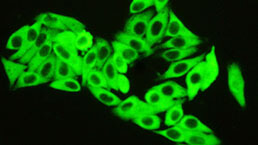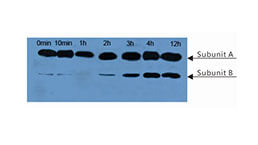Polyclonal Antibody to Gibberellic Acid (GA) 

GA3; Gibberellin A3; Gibberellins
Overview
Properties
- Product No.PAA759Ge01
- Organism SpeciesPan-species (General) Same name, Different species.
- ApplicationsELISA
If the antibody is used in flow cytometry, please check FCM antibodies.
Research use only - DownloadInstruction Manual
- CategoryNutrition metabolismHormone metabolism
- SourcePolyclonal antibody preparation, Host Rabbit
- Ig Type IgG, Potency n/a
- PurificationAntigen-specific affinity chromatography followed by Protein A affinity chromatography
- LabelNone
- Immunogen CPA759Ge21-OVA Conjugated Gibberellic Acid (GA)
- Buffer Formulation0.01M PBS, pH7.4, containing 0.05% Proclin-300, 50% glycerol.
- TraitsLiquid, Concentration 0.5mg/mL
Sign into your account
Share a new citation as an author
Upload your experimental result
Review

Contact us
Please fill in the blank.
Specifity
The antibody is a rabbit polyclonal antibody raised against GA. It has been selected for its ability to recognize GA in ELISA and CLIA.
Usage
Enzyme-Linked Immune Sorbent Assay: 200ng/mL;
Optimal working dilutions must be determined by end user.
Storage
Store at 4°C for frequent use. Stored at -20°C in a manual defrost freezer for two year without detectable loss of activity. Avoid repeated freeze-thaw cycles.
Stability
The thermal stability is described by the loss rate. The loss rate was determined by accelerated thermal degradation test, that is, incubate the protein at 37°C for 48h, and no obvious degradation and precipitation were observed. The loss rate is less than 5% within the expiration date under appropriate storage condition.
Organism Species More: Pan-species (General)Giveaways
Increment services
Citations
- CRK5 Protein Kinase Contributes to the Progression of Embryogenesis of Arabidopsis thalianaPubmed: 31817249
- Functional analysis of the CDPK-Related Kinase (CRK) family in Arabidopsis thaliana
- The gibberellic acid derived from the plastidial MEP pathway is involved in the accumulation of Bamboo mosaic virusPubmed:35524450








